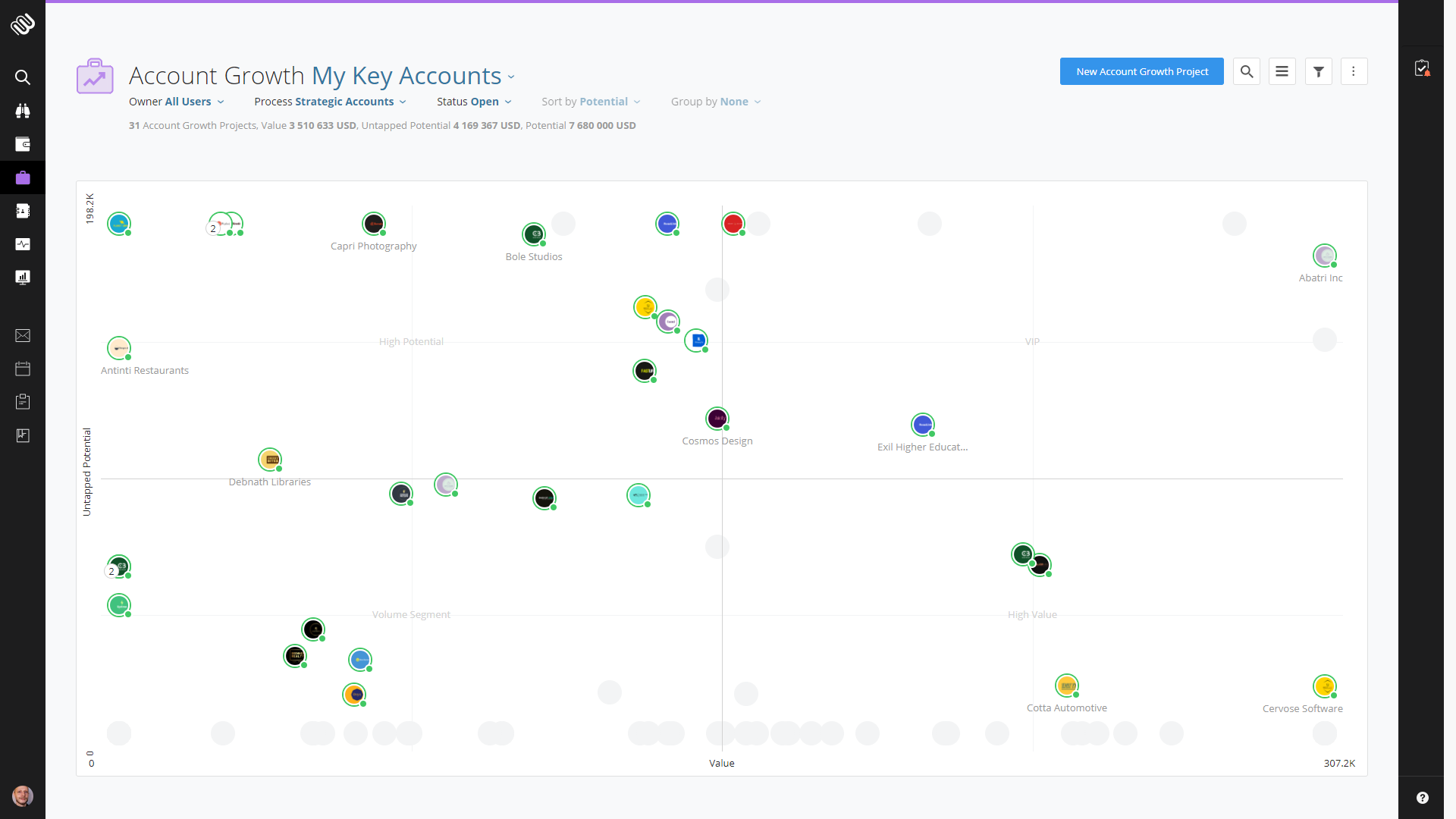
How to click click click your way to failure
I wonder what would happen if we could aggregate all the time we spend clicking around inside our various sales apps, or between sales apps, and measure it. How much time would it add up to?
What if we added in the energetic cost of task-switching among applications in order to accomplish simple things?
In many sales technology environments, “click click clicking” is a silent epidemic that is destroying productivity. I had an opportunity to play around in the latest version of a popular CRM system recently and was amazed at how many clicks it took to complete even the simplest task such as recording a sales activity, or changing an address.
Not to mention, how depressingly ugly the interface was. I won’t name names.
Most CRM systems were not designed for the comfort, ease, or convenience of its users. And that’s a problem that’s costing sales departments more than we might like to admit.
Here are four ways your sales technology is making your salespeople’s lives harder (and their work less effective).
1. The endless click click clicking
If the data or interface your salespeople need is three layers deep beneath a bunch of clicks, you are wasting more of their time than you realize.
And you’re adding to their mental workload. Nobody likes to have to dig for data.
Most CRM systems were not designed for the comfort, ease, or convenience of its users.
It’s even worse if you’re asking your sales teams to switch among multiple applications throughout the course of their day.
Forcing salespeople to click click click their way through layers of technology has a number of harmful effects:
- They are less likely to look up the information they need and may therefore be less informed ahead of customer meetings, or share outdated or incorrect collateral
- They are less efficient in their work. According to research, while switching among tasks (or applications) may take less than a second each time, if you have to do it all day long, it can add up to a loss of up to 40% of productivity.
- Task-switching between applications forces several parts of your brain to engage simultaneously in ways that eat up mental energy much faster than simply engaging in one task at a time. Forcing salespeople to constantly switch among applications all day long literally wears their brains out.
- They are more likely to make mistakes. For all of the reasons above, error rates increase the more people have to click click click to get each task done.
Most salespeople are deeply, intuitively familiar with this problem, even if they don’t know the statistics around it. If you’re working on an opportunity, and you have to leave the view to get to the calendar, it breaks your flow. If you then have to leave the view again to get to your email to send a message, there’s another break in the flow. Every time you do that, you lose focus and time. This is both demoralizing and effectiveness draining.
2. The monotony of lists
I am a fan of lists. In fact, one of my favorite books is Atul Gawande’s Checklist Manifesto, which I reference heavily in my book Stop Killing Deals.
But if your CRM data is presented as nothing but endless lists, you’re selling your sales team short. A well-chosen and well-designed chart or graph can make information clear and actionable much faster than any list.
In Membrain, each of our primary workflows has a signature visualization at its center that defines the key value of the data contained within your CRM. For instance, our new account growth module provides a graph that makes it instantly and easily clear which of your existing accounts represent the best opportunities for growth.

I’d love to show you our beautiful and practical visualizations for the other workflows, and how they can help you manage your team. If you want, you can schedule a demo here.
3. The agony of slow loading times
The only thing worse than click click clicking from one list to the next endless, monotonous list… is having to WAIT for the next list to load.
Slow loading times in CRMs and other sales technology is fundamentally due to bad programming and the Frankenstack problem. Most CRMs were not built to make life easier for salespeople. They were built simply to capture information and provide reports to management.
When workflows and other tools are added on top of the original interface, it adds layers to the technology that slows it down. To make matters worse, many start-ups that build new tools use a fast-and-dirty approach that builds on top of snippets of pre-existing code that is then modified to suit the purpose. While this sounds efficient, the end result is that there is more code than there needs to be, and a lot of it is work-arounds to get older code to meet newer needs.
At Membrain, we worked hard from the very beginning to include only the functionality that complex b2b teams need, and to do so in the most efficient and fast-running way possible. Our philosophy is that if any action takes more than one second to load, it’s taking too long. Many of our clients can hardly believe how fast Membrain works compared to their old way of doing things, and that’s because all of our code is built from the ground up to be FAST.
Our interface is designed to minimize clicking and to eliminate wait times when you do have to click.
4. Why is everything so ugly?
Finally, last but not least… most CRMs, especially those that are combined with ERPs and other technologies, are downright ugly and depressing.
While this may not seem like an important issue to many corporations, it is a productivity issue. Salespeople are humans, and humans learn better, work faster, and feel more motivated when their environment is beautiful.
That includes the technology environment.
Employees who love their CRM will use it. CRMs that feel good to use, will get used. Poor CRM adoption rates are a real problem, and the ugliness, slowness, monotony, and click-click-clickability of most CRMs are a huge reason for it.
At Membrain, we think your salespeople should feel like an executive stepping into a luxury car every time they enter one of our workflows. Every time you get into a quality car, like a Mercedes, you can feel the quality. The door latches just so. The leather seats are comfortable. The acceleration is smooth and quiet. The ride is easy.
When salespeople have this feeling about their CRM, it gives them pleasure to turn it on and get into it each morning. And if your salespeople are energized and inspired by their CRM, they’ll feel more energized and inspired in their work, as well.
We would love to show you how much better - and more effective - sales life can be with Membrain. Schedule a demo today.

By George Brontén
George is the founder & CEO of Membrain, the Sales Enablement CRM that makes it easy to execute your sales strategy. A life-long entrepreneur with 20 years of experience in the software space and a passion for sales and marketing. With the life motto "Don't settle for mainstream", he is always looking for new ways to achieve improved business results using innovative software, skills, and processes. George is also the author of the book Stop Killing Deals and the host of the Stop Killing Deals webinar and podcast series.
Find out more about George Brontén on LinkedIn







